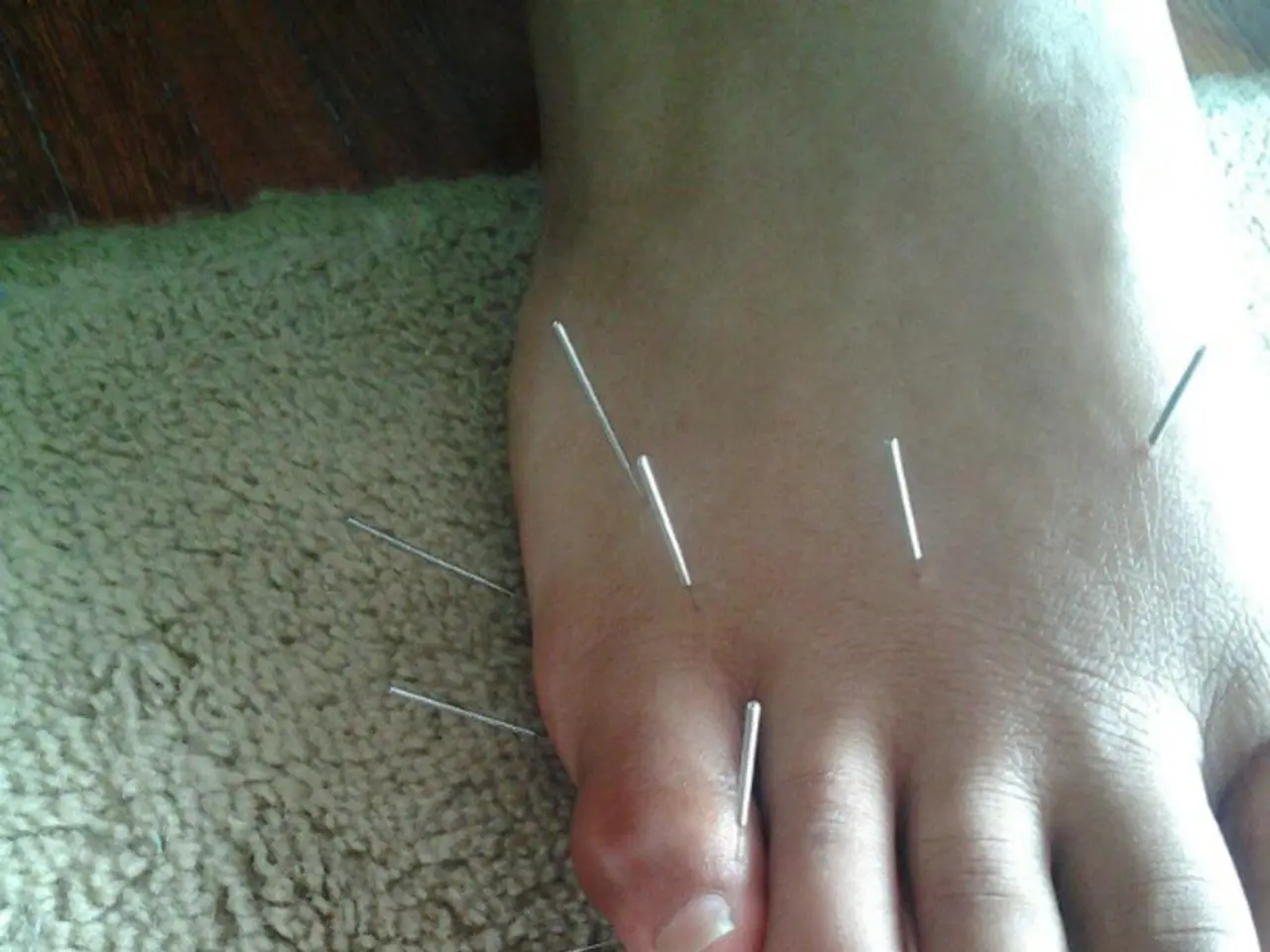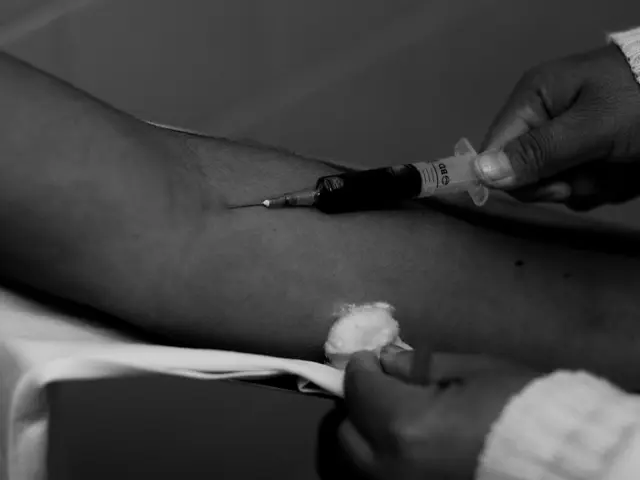Guide to Self-Examination for Testicular Cancer Detection
In a bid to promote early detection and successful treatment of testicular cancer, men are advised to perform monthly testicular self-exams (TSE) after puberty[1][3][4][5]. This simple routine, which takes only two minutes a month, can help men become familiar with their normal testicular feel and detect early changes indicative of cancer.
During the self-exam, men should stand in front of a mirror and look for any changes in the size, shape, or colour of the scrotum. It is normal for one testicle to hang lower or be slightly larger than the other[3]. Using both hands, gently roll each testicle between the thumbs and fingers, feeling for any lumps, swelling, or changes in texture[3].
Being aware of additional symptoms such as a heavy sensation in the scrotum, dull ache in the lower abdomen, back or groin, sudden fluid accumulation in the scrotum, or pain or discomfort in the testicles or scrotum is also crucial[2]. The best time to perform a TSE is after a warm shower or bath, when the scrotum is relaxed[3].
If any abnormalities or changes are found during self-exam, men should promptly consult a healthcare provider for further evaluation[2][3]. The overall cure rate for testicular cancer is 95%, but early detection significantly increases this success rate to 98%[1][3][4][5].
It is important to note that being born with an undescended testicle, having a family history of testicular cancer, infertility, and being white might increase the chances of developing testicular cancer[6]. Additionally, lumps that come with testicular cancer are often painless[6]. Deaths from testicular cancer are somewhat rare, making it one of the most treatable types of cancer[6].
Surprisingly, only 4 in 10 men surveyed by Cleveland Clinic reported doing a regular self-exam of their testicles[7]. Early identification of testicular cancer is key for successful treatment, so it is essential that men take the time to perform this simple, life-saving self-exam.
References: [1] American Cancer Society. (2021). Testicular Cancer. Retrieved from https://www.cancer.org/cancer/testicular-cancer.html [2] Mayo Clinic. (2021). Testicular cancer: Symptoms and causes. Retrieved from https://www.mayoclinic.org/diseases-conditions/testicular-cancer/symptoms-causes/syc-20373566 [3] National Health Service. (2021). Testicular cancer: Checking your testicles. Retrieved from https://www.nhs.uk/conditions/testicular-cancer/checking-testicles/ [4] National Cancer Institute. (2021). Testicular Cancer Treatment (PDQ®)–Health Professional Version. Retrieved from https://www.cancer.gov/types/testicular/hp/testicular-treatment-pdq [5] Testicular Cancer Foundation. (2021). Testicular Self-Exam. Retrieved from https://www.testicularcancerfoundation.org/testicular-self-exam/ [6] Cleveland Clinic. (2021). Testicular Cancer. Retrieved from https://my.clevelandclinic.org/health/diseases/16790-testicular-cancer [7] Cleveland Clinic. (2021). Testicular Self-Exam: Why It Matters & How to Do It. Retrieved from https://health.clevelandclinic.org/testicular-self-exam-why-it-matters-how-to-do-it/
- Regularly conducting a testicular self-exam (TSE) is a vital step in maintaining good mens health, as it can contribute to the early detection and successful treatment of testicular cancer.
- In addition to the physical examination, men should also be aware of symptoms such as a heavy sensation in the scrotum, dull ache in the lower abdomen, back or groin, sudden fluid accumulation in the scrotum, or pain or discomfort in the testicles or scrotum.
- The overall success rate for treating testicular cancer is 98% when detected early, highlighting the importance of health-and-wellness practices like testicular self-exams and fitness-and-exercise for maintaining optimal health.
- Taking a few minutes each month to perform a TSE can help men become familiar with their bodies and potentially detect early signs of testicular cancer, a type of cancer with a high cure rate and low death rate.
- It's important to remember that certain factors like being born with an undescended testicle, having a family history of testicular cancer, infertility, and being white might increase the chances of developing testicular cancer, emphasizing the need for sexual-health awareness and regular self-exams.








